Back in the USSR many gyms were closed in the summer “for repairs.” Out of necessity, lifters and bodybuilders switched from barbells to kettlebells and bodyweight for a couple of months. When they returned to the bar in the fall, after a brief re-entry most were able to set PRs.
If you take a planned break from your strength tool of choice and replace it with another in a purposeful, not random, manner, you cannot help getting stronger.
I will address every possible combination of the top three strength tools: kettlebell, barbell, bodyweight.
Kettlebell for Barbell
You are a powerlifter or a power bodybuilder. Here is what you have to gain from laying off the bar for a few months and going on a strict kettlebell diet.
Your squat will go up through improved flexibility. Thanks to prying goblet squats, you will open your hips and hit the hole effortlessly without flexing your spine. More mobile hips also mean less stress to your knees.
If your shoulders and wrists used to hurt from a low bar placement on your back, they will knock that non-sense off, thanks to kettlebell get-ups and arm bars.

Pain free shoulders alone will boost your bench press—but there is a lot more in store for that lift.
The same get-ups and arm bars will greatly improve your thoracic arch and lateral arch. This will shave inches off your BP’s range of motion—without hyperextending your lower back and compromising your deadlift.
Get-ups will also improve the connection between your upper body and your feet; a strong leg drive is a must, even in the strictest bench presses.
Bottom-up kettlebell exercises will fortify your bench press specific grip; crushing the bar to pulp will add pounds to your max. Plus, the “bottom-ups” will do wonders for improving the pressing technique, even in advanced lifters. Strong lat engagement and impeccably vertical forearms are a trademark of champion bench pressers. Bottom-up kettlebell drills make mastering these elite technique elements a piece of cake. If you military press with a barbell, expect similar improvements.
Then there is hypertrophy. Veteran powerlifters and bodybuilders who have squeezed every ounce of mass out of the barbell never fail to pack on meat rapidly once they take up the right kettlebell moves—hard style cleans, snatches, and their variations. The muscles that respond the most are the shoulders and the upper back, followed by the rest of the posterior chain. Powerlifting pros know how crucial upper back development is to the contemporary bench press championship technique.
If you get serious about the one-arm kettlebell military press, you will build up your “side muscles,” which will make your squats and pulls feel lighter.
As for the deadlift…the title of an article Andy Bolton, the first man to deadlift 1,000 pounds, wrote for StrongFirst says it all: “Kettlebells and Deadlifting: A Match Made in Heaven?”
Hard style swings dial in the deadlift hip action like no other drill. Watch Guido Posante, StrongFirst Certified Team Leader lock out his triple bodyweight deadlifts. His lockout speed has made many non-StrongFirst powerlifters’ eyes bulge in disbelief—it looks like he is swinging a 16kg kettlebell.
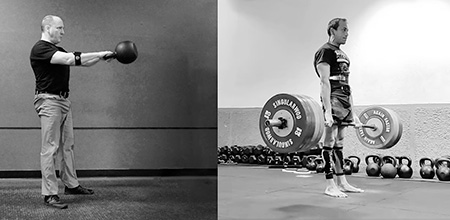
Swings build and bulletproof the lower back and the hamstrings—the muscles powerlifters live and die by.
Last but not least is the “strong endurance” kettlebells develop. It enables all iron athletes to train longer, harder, and more often—while getting less sore.
WHAT YOU NEED:
- If you are brand new to kettlebells, get the StrongFirst Kettlebell Fundamentals online course
- If you trained with kettlebells in the past, pursue double kettlebell drills with Kettlebell STRONG! online course
Kettlebell for Bodyweight
If you are a “street workout” athlete, you are missing an iron pill in your training diet.
While bodyweight exercises enable one to achieve strength and development that is spectacular in the upper body and good in the legs, no calisthenic drill comes close to what hip hinges with a weight, be it a kettlebell or a barbell, can do for the lower back and for tying the entire body around it into a single explosive effort. Sure, there are good bodyweight moves for the lower back (back extensions, reverse hypers, neck bridges, Chinese planks, back levers, etc.) but none can touch the iron. If you are training to project your strength outward—impacting or moving something or someone other than yourself—there is no substitute for a loaded hip hinge.
Kettlebell swings or snatches will also improve your relative strength as you drop the fat that holds your front levers back like an anchor.
The rigorous demands of advanced calisthenics put the shoulders through the ringer. Kettlebell get-ups can help keep them stable and healthy.
The kettlebell military press—the most biomechanically perfect pressing exercise—will juice your progress in all your handstand work.
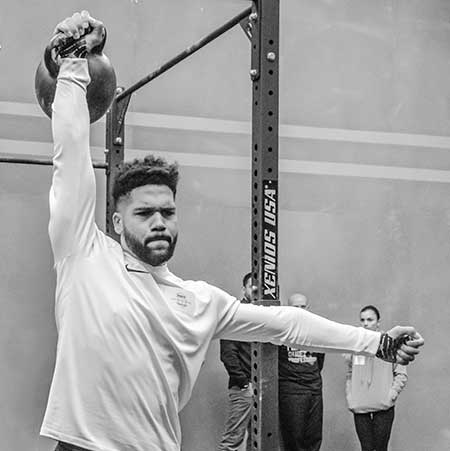
If you are a relative beginner who has not yet mastered abdominal tension and the hollow position, there are fantastic kettlebell exercises that will speed up the process. They are the same moves we recommend to powerlifters: get-ups, bottom-up drills, and double front squats.
WHAT YOU NEED:
- If you are brand new to kettlebells, get the StrongFirst Kettlebell Fundamentals online course
- If you trained with kettlebells in the past, pursue double kettlebell drills with Kettlebell STRONG! online course
Bodyweight for Barbell
The exquisite arsenal of bodyweight drills that teach maximal abdominal tension while developing the six-pack and everything in its vicinity will improve strength in any modality, the barbell included. If you have wondered, how could it be that some gymnasts can easily deadlift more than double their bodyweight the first time they try it, this is your answer. A stronger waist makes all lifts go up.
(In case you are seeing a contradiction with my earlier statement about calisthenics not working the lower back to the max, here is the explanation. A round back deadlift performed by an athlete with a strong midsection engages the spinal erectors surprisingly little. For instance, one EMG measurement recorded them firing at a mere 50% of a maximal voluntary contraction in an 80% 1RM deadlift.)
A fantastic control of the scapulae and the muscles surrounding them is something that serious bodyweight strength training is known for. Expect bench and military press PRs.
Pistols are magic for squats and deadlifts. If done barefoot, as they ought to be, they wake up the feet and the ankles, making various muscles communicate with each other and contract stronger and more in sync.
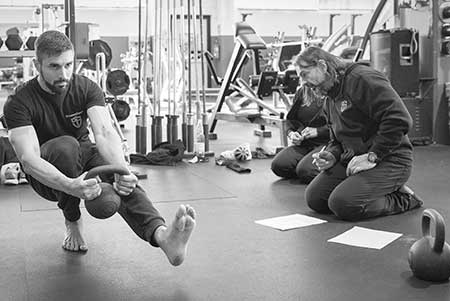
Pistols also promote symmetry between the legs that is essential for athletic longevity. Plus, the pistol is a self-assessment. If you are not weak and overweight and yet unable to do a bodyweight only pistol on one or both legs, you have some issues—mobility, stability, motor control, medical conditions—that you need to resolve before piling wheels on your back squat.
Many barbell athletes find that pistols improve their deadlift glute and leg drive better than back and front squats.
WHAT YOU NEED:
- StrongFirst Bodyweight Fundamentals online course
Bodyweight for Kettlebell
All of the benefits barbell lifters get from strength calisthenics apply to gireviks as well.
A special note on presses. Many StrongFirst certified instructors have experienced big kettlebell military press PRs after spending a couple of months on either handstand pushups or one-arm pushups.
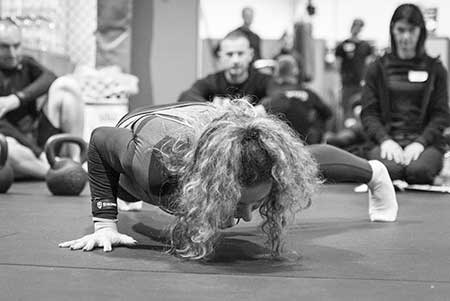
WHAT YOU NEED:
- StrongFirst Bodyweight Fundamentals online course
Barbell for Bodyweight
For a calisthenic strength athlete maintaining a high strength to bodyweight ratio is of essence. Thus, one has to be cautious about adding muscle in the wrong places. Run a barbell bodybuilding leg program—and kiss your front levers good-bye.
You would be much better off “tying your body together” without putting on unnecessary pounds with heavy low rep deadlifts.
If you are a relative beginner to strength calisthenics, barbell Zercher squats will teach you a lot about body tension. Keep the reps and the total volume low to avoid the undesirable lower body hypertrophy.
Heavy bench presses or bridge floor presses will make your bodyweight feel lighter.
Same presses with medium weights, medium reps, and many sets will bulk you up in a hurry.
Barbell military presses will teach you some subtle skills of strength that you can apply to your handstand work—while adding mass to your shoulders.
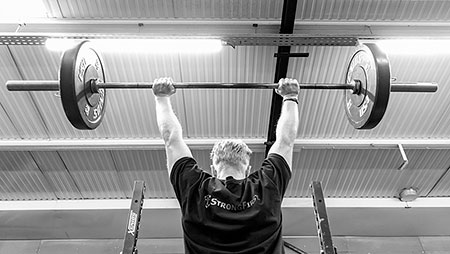
WHAT YOU NEED:
- StrongFirst Barbell Fundamentals online course
Barbell for Kettlebell
Say, you are doing swings and get-ups with a 32kg kettlebell on the Kettlebell Simple & Sinister program. Build up your barbell strength to very modest levels, sets of five with 225lb in the bench press and the Zercher squat and 365lb in the deadlift, and the next in line 40kg kettlebell will feel light as a feather.
If you are serious about your kettlebell military press, close grip benches will not fail to deliver a PR in a hurry. And they will do it with a training volume that is laughably low by the military pressing standards.
WHAT YOU NEED:
- StrongFirst Barbell Fundamentals online course
Improve Your Technique—in Any Exercise, with Any Strength Tool
Motor-learning experts know that in an experienced athlete a skill tends to improve after a layoff, the so-called reminiscence effect.
Multiple repetitions of a skill form what Russians call the dynamic stereotype, or a “how-to manual” of the given movement in the athlete’s nervous system. Although forming a dynamic stereotype is necessary to learn a skill, once it is formed, it is difficult to improve on. Continued practice only reinforces it. A few months’ layoff leaves the fundamental skill signature in place while erasing some of the “noise” that has built up. It also makes the skill more plastic in future practice.
The Bottom Line
If you are at least an intermediate with your strength tool of choice, pick two to three months in your calendar when you are not competing or about to compete and can afford experimentation. Take a leap of faith and switch to another strength tool.
Go cold turkey. This article is not about using exercises with other tools of strength as assistance in the same training cycle. Undoubtedly effective when played right, but this is not what you are doing here today. The intention is to make a clean break with your chosen tool to fully appreciate the new skills and strengths another tool will bring—and to take advantage of the reminiscence effect.
Then come back to your #1 tool of strength. Take several weeks to build up to your previous level—and then beyond.
Keep detailed notes during your temporary “break-up” and during the re-entry. What strength skills did you and your body learn from a new to you tool and exercises? Which lift(s) skyrocketed, which stayed put, and which slipped back?
If You Are a Beginner
Save this article for the future. For now, do your one thing and do not get distracted.
If you do not know what your “one thing” is, it is the kettlebell.
WHAT YOU NEED:
- StrongFirst Kettlebell Fundamentals online course
Start training today.
Power to You!
Regardless of where you are on your journey of strength and self-improvement, power to you!
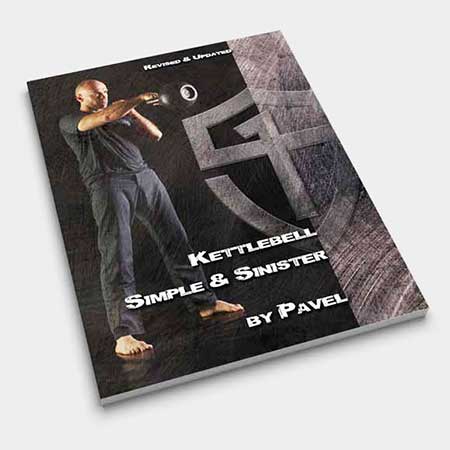

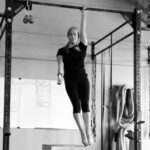

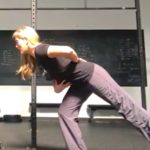
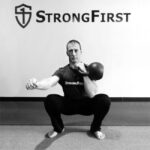

Great article once again Pavel! Ive been doing s&s and ROP the past 12 months. Ive been playing with the idea of trap bar farmer carries for the cardio instead of swings in the ROP.
How would you program them?
Thank you, Rob.
Carries are great but I would not use them as “cardio.” You need an exercise that either allows continuous normal circulation (e.g., running) or a explosive exercises that impede the circulation only briefly.
I love this.
Back when CoVid first arrived, I was in school in Paris, and the confinement separated me from my beloved barbell. As a powerlifting practioner, it felt like a death sentence to gains.
I took it upon myself to train using solely bodyweight, OAP, pistols, front levers. For two months, I trained these lifts and variations daily.
In my first week back to the barbell, I hit a floor press PR of 110 kgs x 3 (previously 100 kgs x 5) and a deadlift PR of 160 kgs for 12 reps at about 70 kgs bw.
It was one of the most enlightening periods of training in my career.
De la puissance a vous, Philippe!
Est-que vous connaissez Alexey Sénart?
Awesome article Pavel!
Thank you, Adam.
Howdy Pavel!
Thanks for the info. Coming from the S&S timeless simple to a barbell adventure:
1-) DL, zercher squat and some form of press. Among the military press/bench press/bridge floor press, are there considerations to bear in mind when choosing one over the others?
2-) What conditioning would you advise?
Thanks
Jorge, what are your goals?
The goal is “to learn” the DL. Approach it like a craft and keep it simple. Eventually reach a level that is commensurate with the 32kg kettlebell Simple standard (male 60kg body weight), while still maintaining conditioning.
In the spirit of your article, I’d pick a add a barbell squat and barbell press to make it fully barbell. For the squat, the zercher seems a best starting point.
But I have no idea which press to pick and how to program some conditioning.
Jorge, the ZSQ is a perfect complement to the DL.
If you want your press to support S&S when you get back to it, any of your choices is fine.
For “conditioning,” if health is your only goal, any cyclical activity that raises your HR without hurting you. Hiking, cross-country skiing, etc.
Jorge, forgot to add. If your carries are light, it will work.
The Kettlebell Mile
I was right in the middle of another go at S&S after many months on Q&D when I had to have surgery on my calf (not in anyway related to my training). The surgery did not go well and for many months it was not for sure that I’d have full use of my left leg, or even the leg itself.
Training in my normal way was out as I could not utilize my lower body which puts most types of kettelbell work out of reach. I decided to dust off my power tower (after clearing off the clothes draped over it) and do a body weight push/pull super set of dips and pull ups using both pyramids and ladders. This was so valuable after so long of using kettlebells exclusively. I was able to maintain good upper body strength in every axis and let my leg heel up.
I’m back to swinging and my lats and grip are strong as ever from the pull ups. I’ve been able to press my 28kg bell for reps just from the dips keeping my triceps firing in my break from the KB.
I would not wish to have another medical issue, but the premise of this article has been proven true for me.
Albert, you made good choices. Power and health to you!